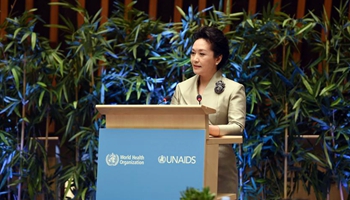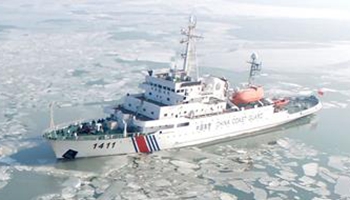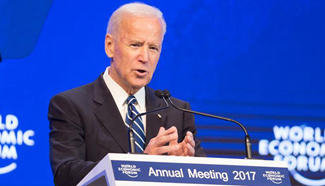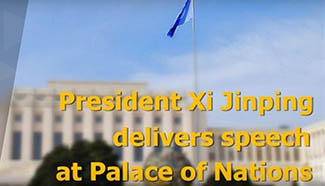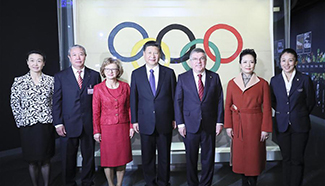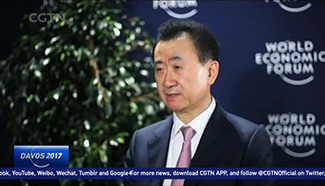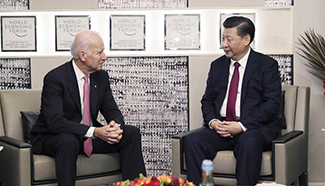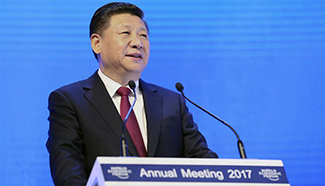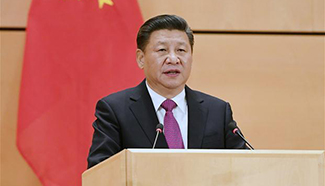by Xinhua Writer Chen Shilei
BEIJING, Jan. 17 (Xinhua) -- Japanese Prime Minister Shinzo Abe may feel let down after his just-concluded Asia-Pacific trip.
Amid a lackluster domestic economy and uncertainties over U.S. policy on the region, Abe carefully selected four Pacific Rim nations -- the Philippines, Australia, Indonesia and Vietnam -- as his destinations. His motives were clear: to incite them to raise the South China Sea issue again, and seek a leading role in the region as "America's first Pacific President" Barack Obama is stepping down.
However, Abe will probably feel disappointed. For starters, the South China Sea issue targeting China has not been revisited as Abe expected.
In the Philippines, Abe intentionally raised the so-called arbitral award in a case filed by the former Philippine government against China over maritime territorial disputes. But President Rodrigo Duterte made no direct mention of the disputes.
In Vietnam, Abe promised to offer new patrol vessels to help the country enhance its maritime law enforcement capability. But Vietnam has vowed to manage maritime differences with China and jointly safeguard the peace and stability of the South China Sea.
The pledge was made in a joint communique issued by China and Vietnam during the recent official visit to China by Nguyen Phu Trong, general secretary of the Communist Party of Vietnam Central Committee.
Meanwhile, Abe is also seeking these countries' support to prompt U.S. President-elect Donald Trump to maintain Washington's commitment to the region.
During the trip, Abe was still making last-ditch efforts to save the Trans-Pacific Partnership Agreement (TPP), the centerpiece of Obama's "pivot to Asia" policy. The free trade deal includes 12 Pacific Rim countries but excludes China.
However, whether Washington will continue its Asia-Pacific policy is not Tokyo's call. Trump has said he plans to scrap the TPP, making the trade deal largely obsolete.
More and more countries are turning to the Free Trade Area of the Asia-Pacific (FTAAP), which was launched at the 2014 Beijing summit of the Asia-Pacific Economic Cooperation (APEC) with a roadmap and made substantial progress after a collective study on the FTAAP was approved at the 2016 APEC summit in Lima.
By encompassing all 21 APEC economies through trade liberalization, the FTAAP, once established, will become the world's largest free trade zone, covering 57 percent of the global economy and nearly half of world trade.
Furthermore, cooperation between Japan and the member countries of the Association of Southeast Asian Nations (ASEAN) cannot hinder the mutually beneficial collaboration and dialogue between ASEAN and China.
Over the past 25 years, China and ASEAN have further strengthened their strategic dialogue, enhanced mutual political trust, and deepened practical cooperation in various fields including trade and economy, interconnectivity and security.
Now, China is ASEAN's largest trade partner and ASEAN is China's third largest partner. Bilateral trade rose to 472.16 billion U.S. dollars in 2015 with an annual growth rate of 18.5 percent since 1991. Annual trade is expected to reach 1 trillion dollars by 2020.
It is welcome that Japan, despite its sluggish economy, makes its due contribution to help spur less-developed economies in the region. But any form of economic cooperation should not be conducted at the cost of regional peace and stability.
It is advisable that Japan stop fishing for trouble in the Asia-Pacific, abandon its zero-sum mentality and embrace win-win cooperation for the benefit of the region and the world at large, with itself included.

